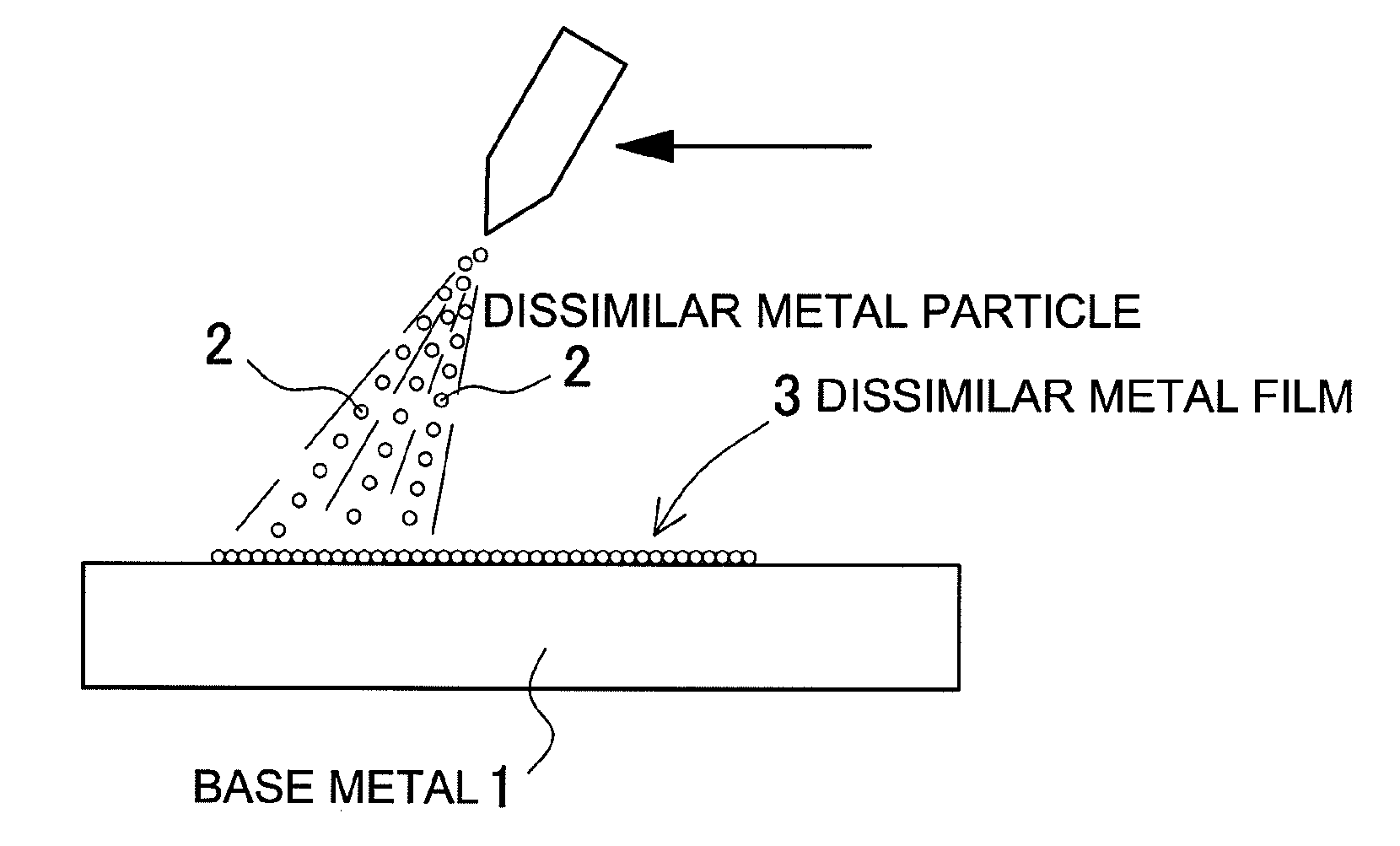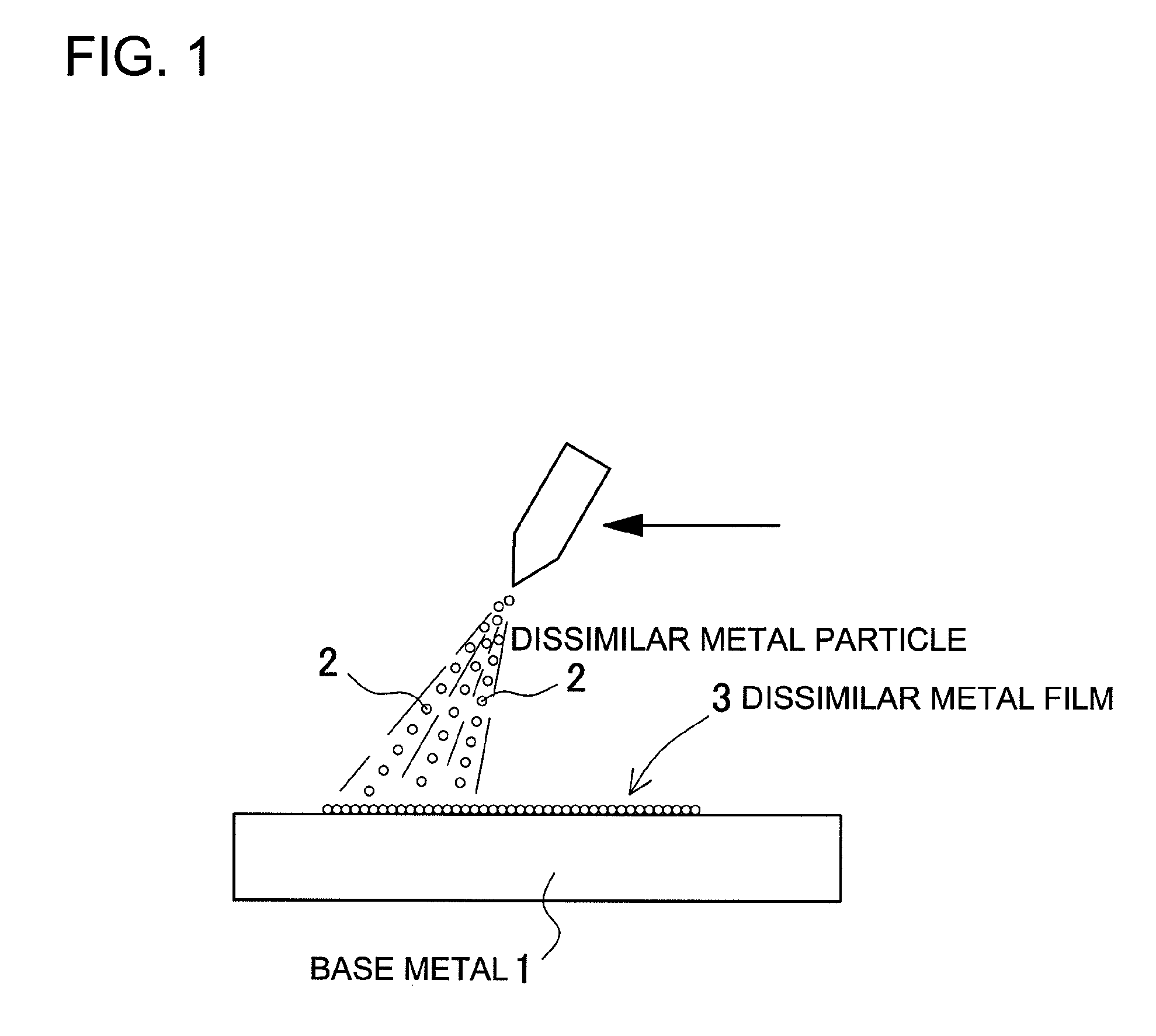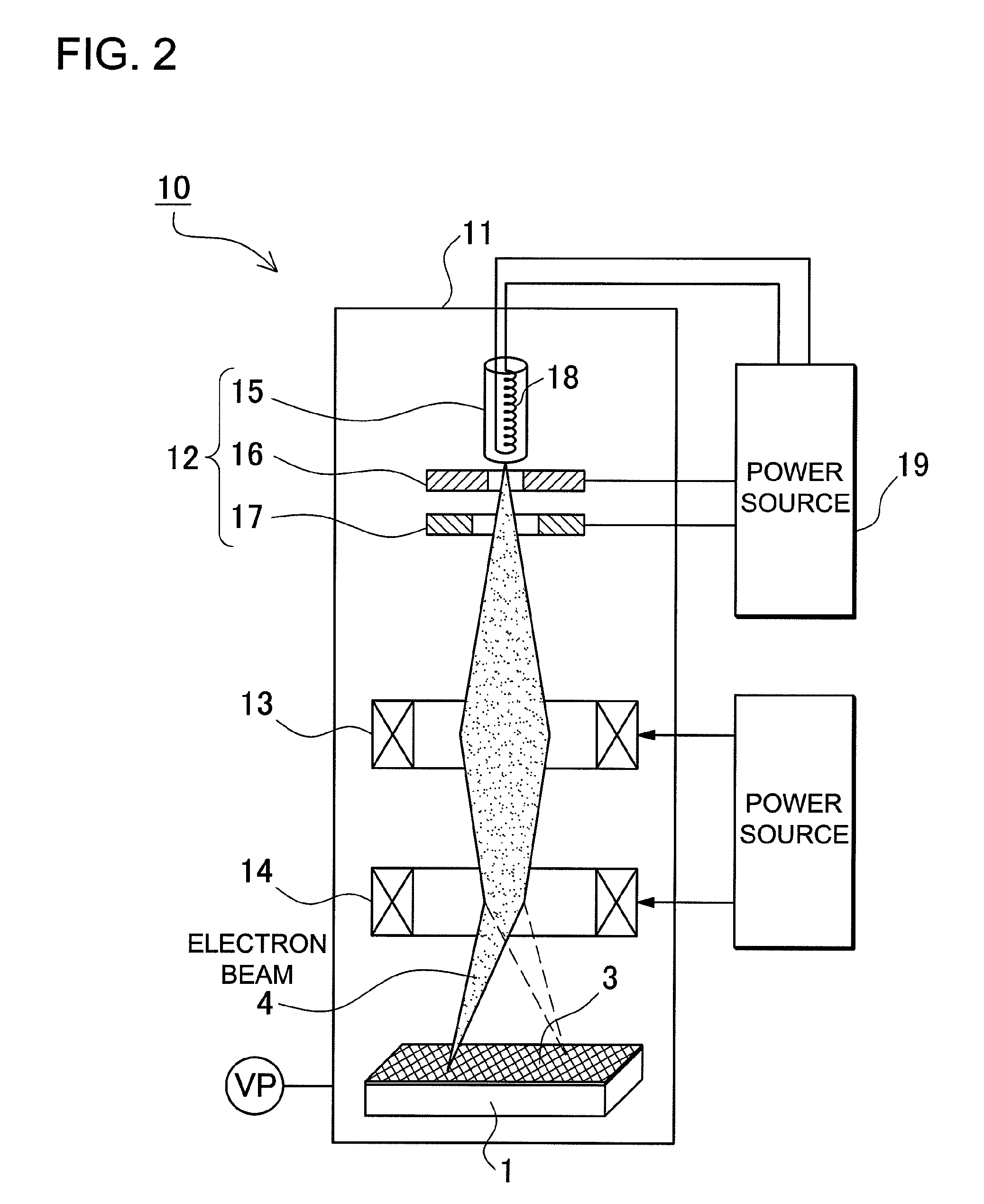Metal surface treatment method
a metal surface treatment and metal technology, applied in the direction of coatings, manufacturing tools, solventing apparatus, etc., can solve the problems of difficult surface treatment, cumbersome waste liquid treatment of various chemicals, and difficult plating process, and achieve the effect of simple system, simple and efficient manner, and efficient dissimilar metal film provision
- Summary
- Abstract
- Description
- Claims
- Application Information
AI Technical Summary
Benefits of technology
Problems solved by technology
Method used
Image
Examples
example 1
(1) Shot-Peening Step
[0084]The dissimilar metal particle 2 composed of molybdenum disulfide was shot-peened on the surface of pure copper or a copper base alloy being the base metal 1. The average particle size of the dissimilar metal particle 2 was 10 μm, and the injection pressure for shot-peening operation was 1 MPa. In this shot-peening operation, the dissimilar metal film 3 of molybdenum disulfide was provided on the surface of the base metal 1.
(2) Electron Beam Irradiation Step
[0085]The base metal 1 whose surface was provided with the dissimilar film 3 of molybdenum disulfide was placed inside the sealed chamber 11, the sealed chamber 11 was evacuated into a vacuum state, and the surface of the base metal 1 was irradiated with the electron beam 4. Conditions for the electron beam irradiation were set as follows. The degree of vacuum in the sealed chamber was 7 Pa or less.
Diameter of the Area Spotted by the Electron Beam0.3mmAcceleration Voltage30kVBeam Current100mAScanning Are...
example 2
(1) Shot-Peening Step
[0088]The dissimilar metal particle 2 composed of tungsten was shot-peened on the surface of Ti being the base metal 1. The average particle size of tungsten being the dissimilar metal particle 2 was 20 μm, and the injection pressure for shot-peening operation was 1 MPa. In this shot-peening operation, the dissimilar metal film 3 of tungsten was provided on the surface of the base metal 1.
(2) Electron Beam Irradiation Step
[0089]The base metal 1 whose surface was provided with the dissimilar metal film 3 of tungsten was placed inside the sealed chamber 11, the sealed chamber 11 was evacuated into a vacuum state, and the surface of the base metal 1 was irradiated with the electron beam 4. Conditions for the electron beam irradiation were set as follows. The degree of vacuum in the sealed chamber was 7 Pa or less.
Diameter of the Area Spotted by the Electron Beam0.3mmAcceleration Voltage30kVBeam Current110mAScanning Area of the Electron Beam30 mm × 30 mmScanning Tim...
example 3
(1) Shot-Peening Step
[0092]SKD-11 was used as the base metal 1, and the dissimilar metal particle 2 composed of SiC was shot-peened on the surface of the base metal 1. The average particle size of the dissimilar metal particle 2 was 3 μm, and the injection pressure for shot-peening operation was 1 MPa. In this shot-peening operation, the dissimilar metal film 3 of SiC was provided on the surface of the base metal 1.
(2) Electron Beam Irradiation Step
[0093]The base metal 1 whose surface was provided with the dissimilar metal film 3 of SiC was placed inside the sealed chamber 11, the sealed chamber 11 was evacuated into a vacuum state, and the surface of the base metal 1 was irradiated with the electron beam 4. Conditions for the electron beam irradiation were set as follows. The degree of vacuum in the sealed chamber was 7 Pa or less.
Diameter of the Area Spotted by the Electron Beam0.3mmAcceleration Voltage30kVBeam Current100mAScanning Area of the Electron Beam30 mm × 30 mmScanning Ti...
PUM
| Property | Measurement | Unit |
|---|---|---|
| particle size | aaaaa | aaaaa |
| particle size | aaaaa | aaaaa |
| smoothness | aaaaa | aaaaa |
Abstract
Description
Claims
Application Information
 Login to View More
Login to View More - R&D
- Intellectual Property
- Life Sciences
- Materials
- Tech Scout
- Unparalleled Data Quality
- Higher Quality Content
- 60% Fewer Hallucinations
Browse by: Latest US Patents, China's latest patents, Technical Efficacy Thesaurus, Application Domain, Technology Topic, Popular Technical Reports.
© 2025 PatSnap. All rights reserved.Legal|Privacy policy|Modern Slavery Act Transparency Statement|Sitemap|About US| Contact US: help@patsnap.com



